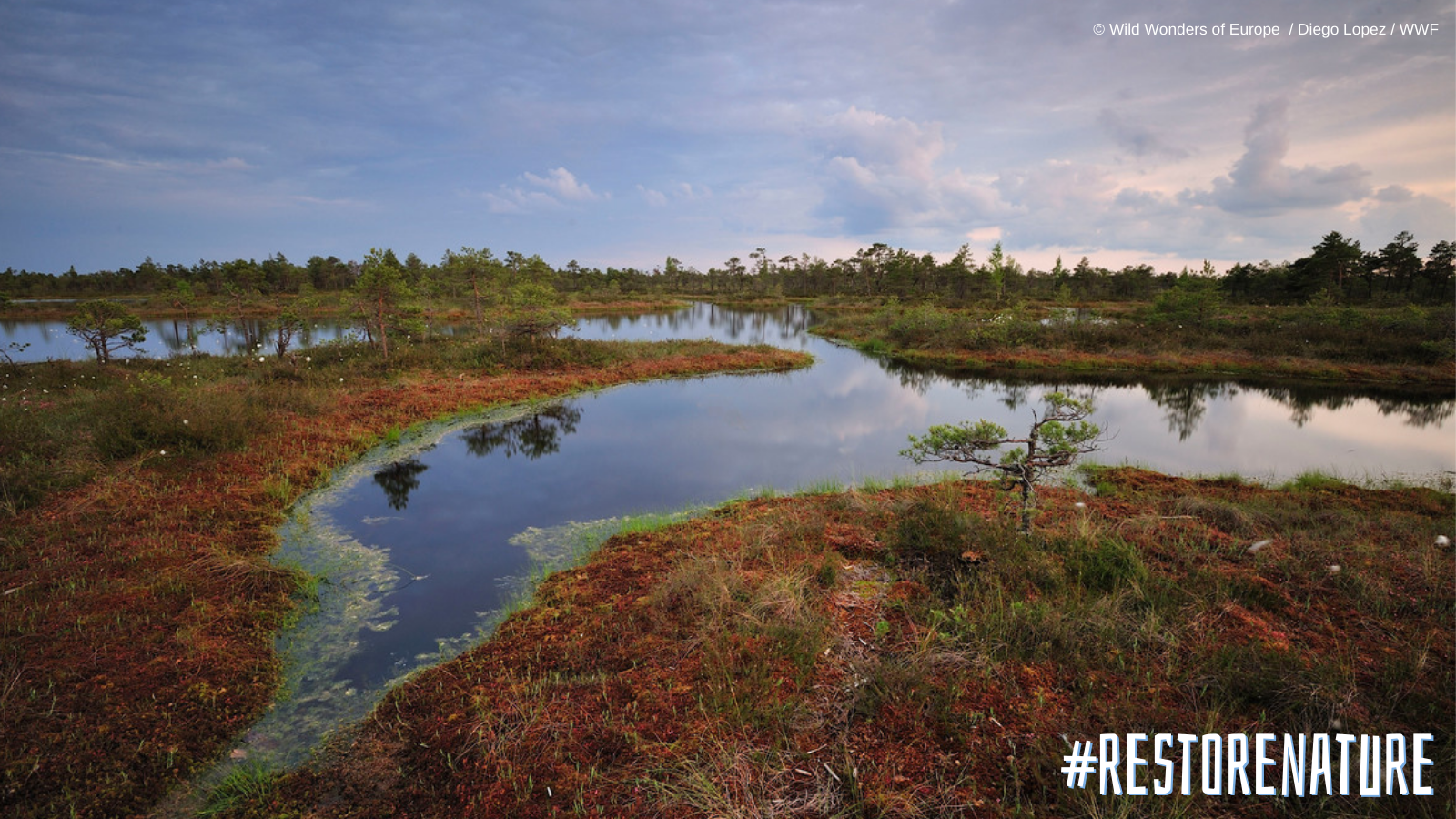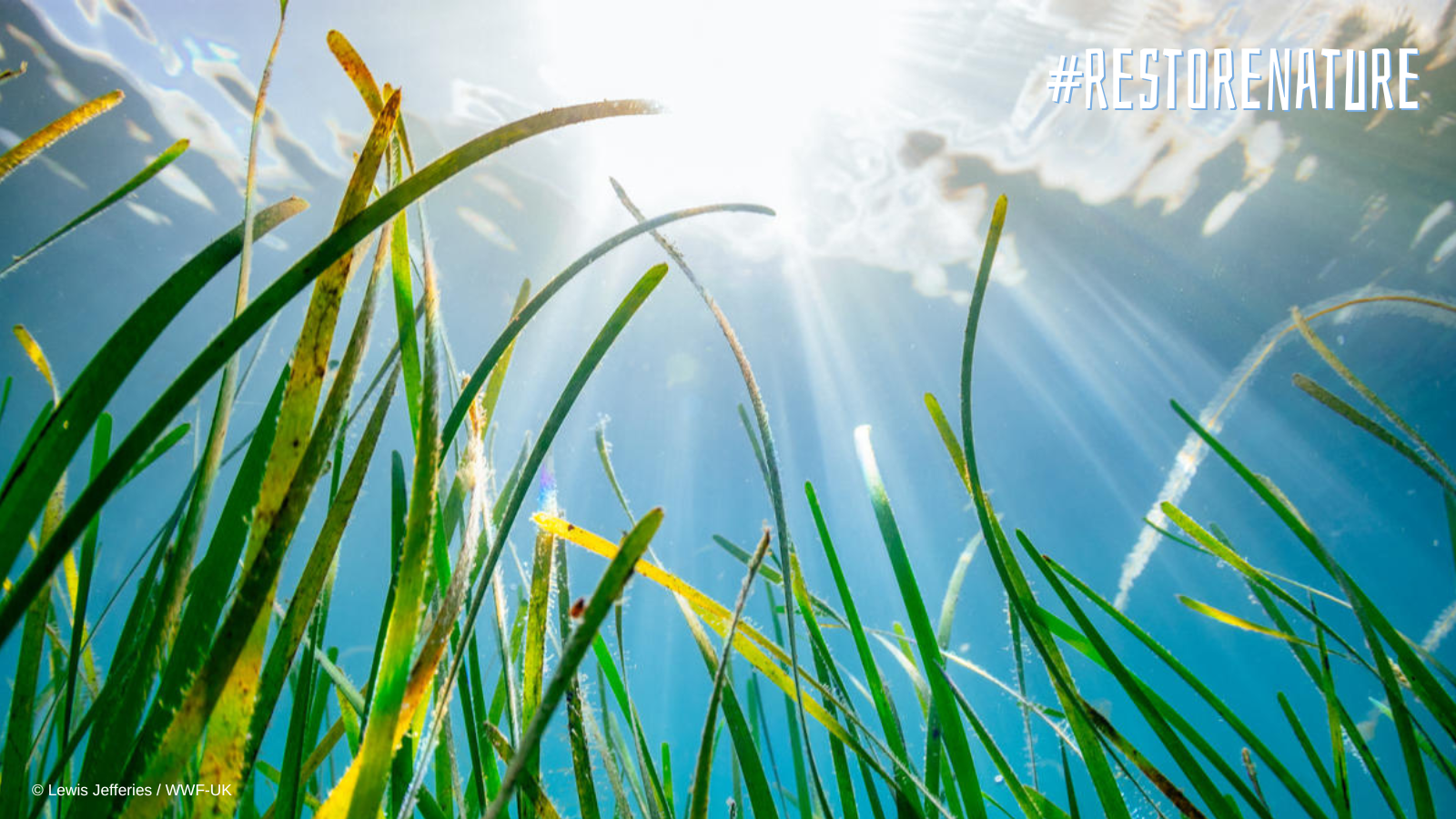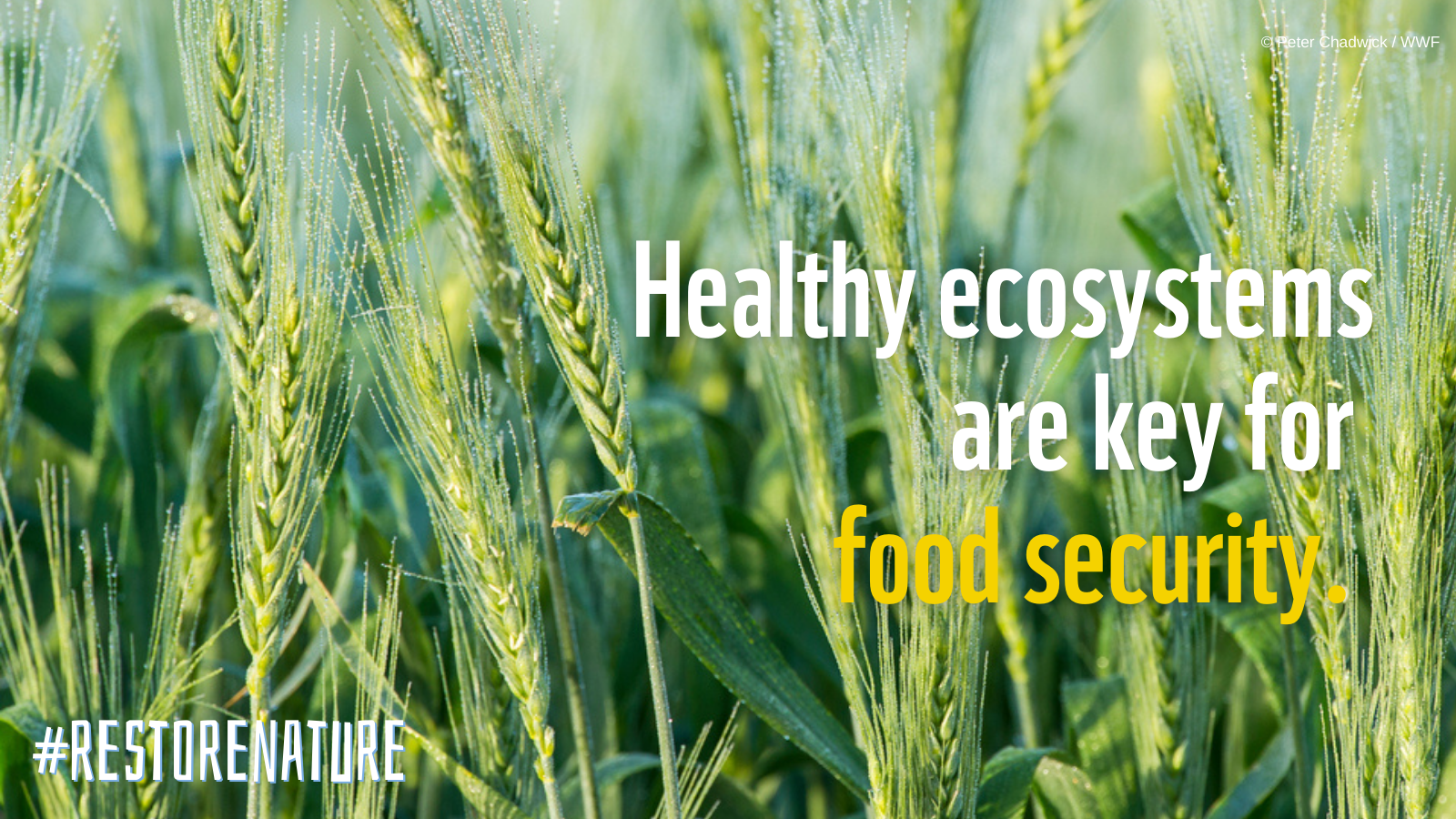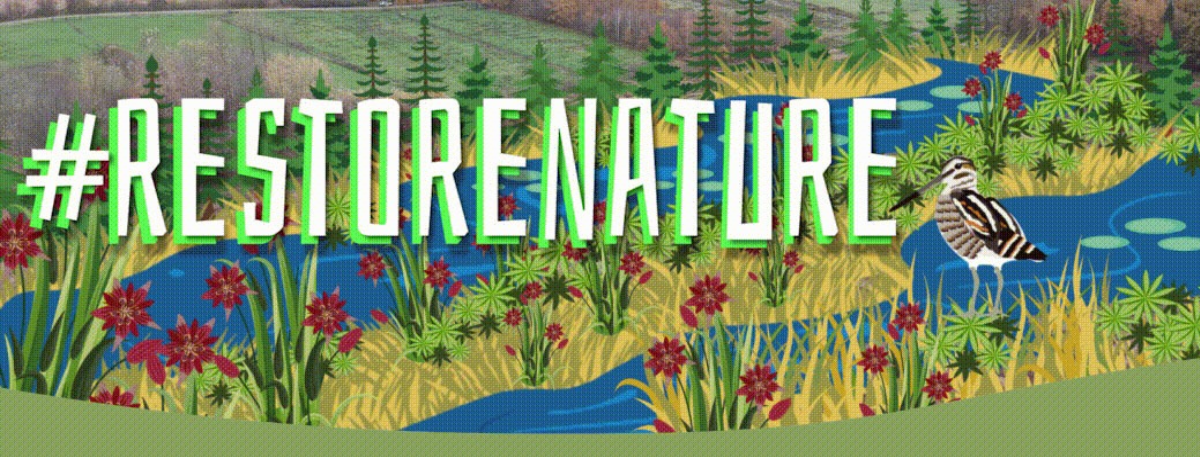
The benefits of Nature Restoration
Restoring nature is caring: about humanity, about our planet, about the future.
5 main reasons why we need to restore nature:
-
It helps biodiversity: bringing back local flora and fauna.
-
It tackles the climate crisis: natural habitats store carbon.
-
It protects us from natural disasters: forests and wetlands reduce flooding.
-
It improves our health: access to nature benefits our well-being.
-
It boosts the local economy by strengthening food provision and sustainable practices.
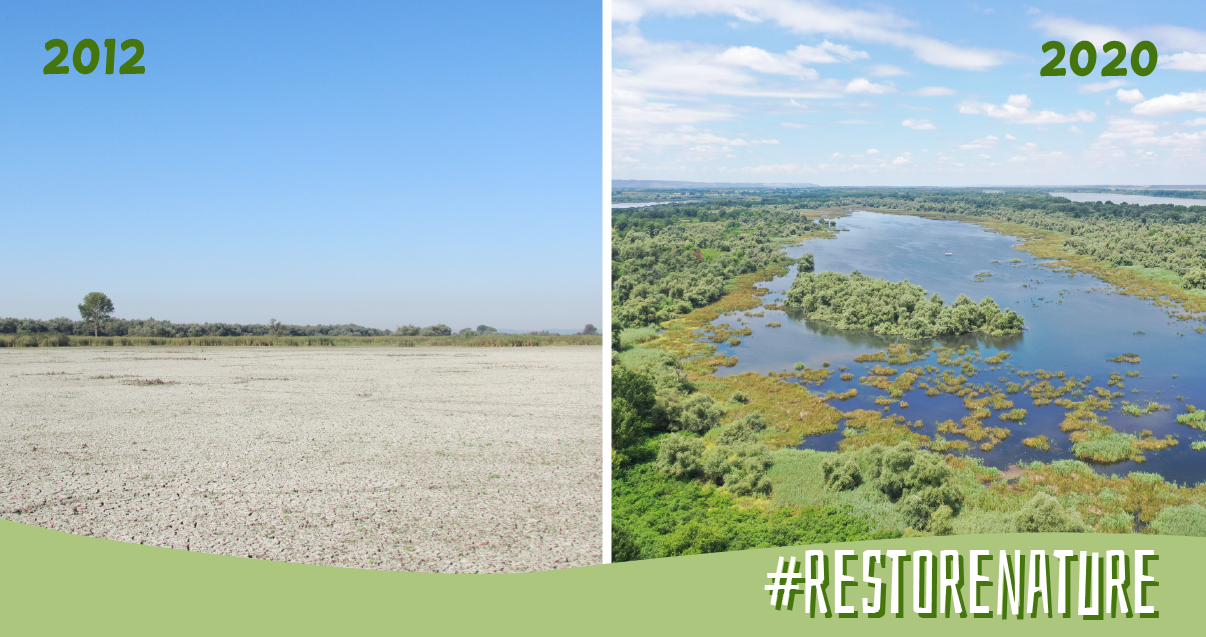
Ecosystems
The proposal for the Nature Restoration Law includes legally-binding restoration targets for a range of ecosystems, especially those with the biggest potential to capture and store carbon, such as peatlands, old-growth forests, marine ecosystems, rivers and farmlands.
-
Peatlands
Peatlands are terrestrial wetland ecosystems that store huge amounts of carbon as the water levels prevent dead plants from fully decomposing. There are many different types of peatlands such as bogs, mires or fens but they all share a wet bogginess that can be a carbon storage wonder. Peatlands cover only 3% of the world's land area but store twice as much carbon as all trees on Earth combined! Peatlands occur in almost all EU Member States, covering more than 350,000 km2 of EU land area. But over 50% of these areas are degraded by drainage and used for agriculture, forestry and peat extraction.
When peatlands are drained, they become a huge carbon emissions source. The EU is the second largest global emitter of greenhouse gases from drained peatlands, which makes up approximately 7% of EU’s total GHG emissions.Reducing these emissions significantly and turning them from a climate liability to a climate solution is possible by rewetting drained peatlands. Rewetting peatlands will also prevent soil sinking, eventual flooding, and saltwater intrusion in coastal areas. It will lower the risk of peat fires, soil erosion and desertification.
Peatlands also play a special role in being a home to specialised plant, amphibian and bird species that are not only rare, but also threatened on the European or even global level.
-
Forests
European forests cover 40% of EU land. But most of the European forests are heavily exploited and in poor condition: only 2,2% of EU forests are undisturbed by human activity.
By storing carbon, forest act as important buffers against climate change. Forests play a crucial role in erosion protection and healthy forests can withstand extreme weather events such as forest fires. On top of that, forest purify the air we breathe and filter the water we drink.
Forests host nearly 90 % of the world’s terrestrial biodiversity. Biodiversity is richer in older forests, as they have a more significant volume of deadwood and greater structural complexity of trees and plants of different ages.
-
Marine ecosystems
The ocean is the largest planetary carbon sink as it removes around one-third of the CO2 emitted by human activity [1]. Healthy marine ecosystems capture and lock in carbon, acting as a nature-based solution to climate breakdown.
Our marine ecosystems are far from healthy. In 2020, the European Environment Agency (EEA) reported a high loss of biodiversity in more than 80% of Europe’s seas [2].
Restoring EU seas can bring back the sea’s abundant web of life, allowing marine and coastal ecosystems to perform their natural functions. A healthy ocean also means healthy fish stocks and restoring one part of the sea can lead to more and bigger fish amongst others. Restoring the ocean therefore also brings many benefits for sectors of the economy such as tourism and fisheriesPassive restoration is a main and simple solution in marine ecosystems: by simply setting aside areas as no-take zones where any fishing, mining, drilling, or other extractive activities are forbidden, marine wildlife can recover and bring many benefits that reach far beyond the no-take zone.
[1] Friedlingstein, P., Jones, M.W., O’Sullivan, M., Andrew, R.M., Bakker, D.C.E., Hauck, J., Le Quéré, C., Peters, G.P., et al., ‘Global Carbon Budget 2021’, Earth System Science Data, 2021, 10.5194/essd-2021-386.
[2] European Environment Agency, Marine messages II, EEA Report, 2020.
-
Rivers
Today, only 40% of Europe’s waters are estimated to be in good condition. Unsustainable agriculture, hydropower, flood defence and navigation are recognised as the main pressures that prevent Europe’s waters from recovering. But healthy free-flowing rivers are our best ally for real flood protection!
Rivers and the water and nutrients they carry feed forests, wetlands and other terrestrial habitats, and are home to many thousands of freshwater species.
Restoring rivers can help combat coastal erosion, favour nutrient cycling while reducing pollution, generate microclimates that help deal with heat waves, and create a healthier, more resilient and more attractive landscape. In addition, free-flowing rivers create many opportunities for recreation and financial flows for local economies such as fishing, water sports, tourism, etc.
-
Farmland
Intensive agriculture is the main driver of global biodiversity loss. In the last 30 years, farmland birds as well as grassland butterflies have declined drastically in Europe, with losses of 32% and 39% respectively. These species are however fundamental to ensuring real food security through e.g. pollinating our food.
Our current way of farming is exhausting the land; from pesticides harming pollinators to fertilizers polluting our soil and water.
We need to restore agricultural ecosystems to ensure long-term food security. To bring biodiversity back to farmland, natural elements such as shrubs, ponds or old trees are needed on every farm to provide space for nature.
-
Grassland

